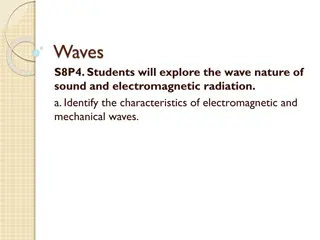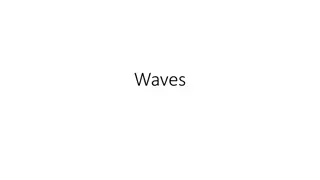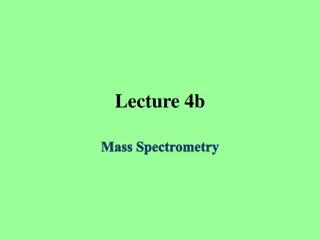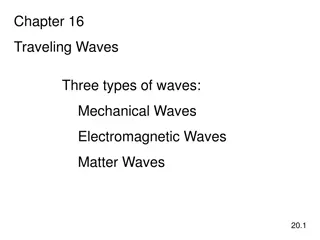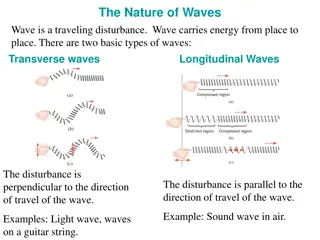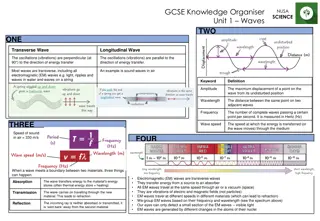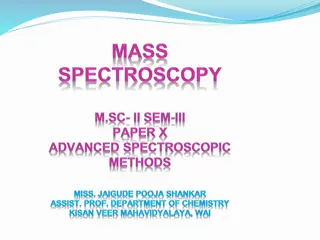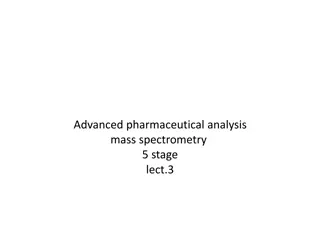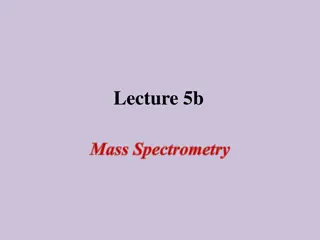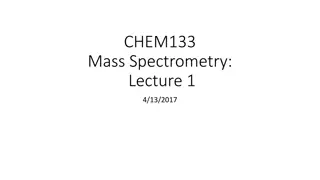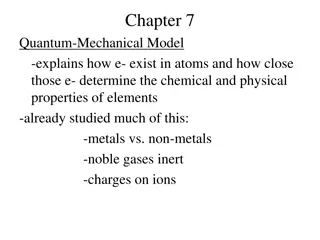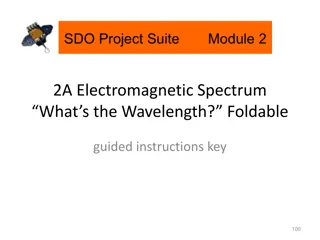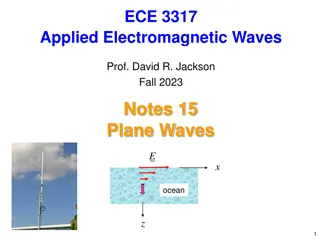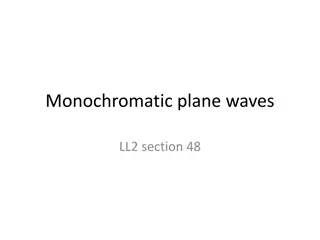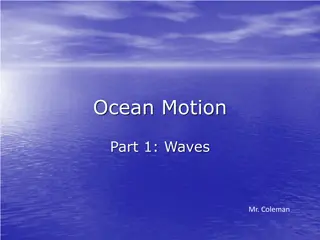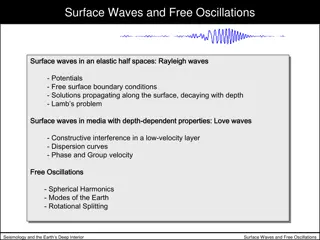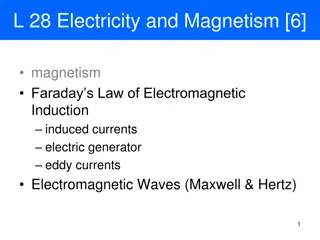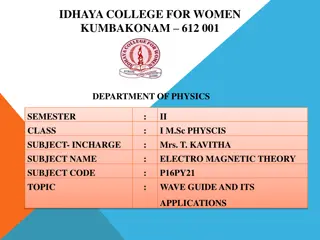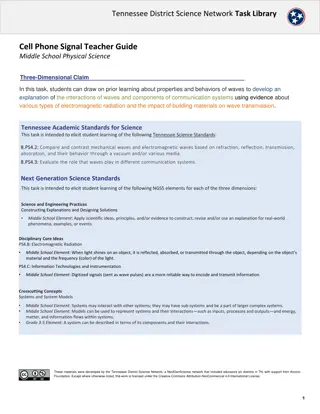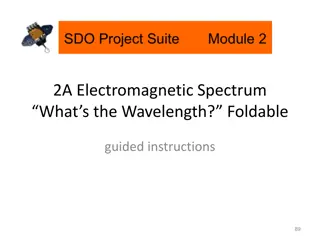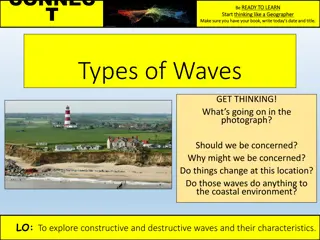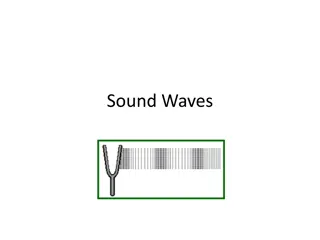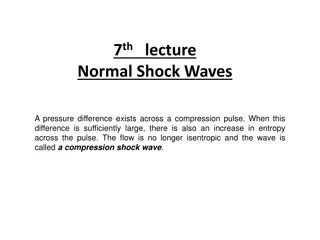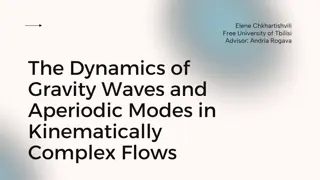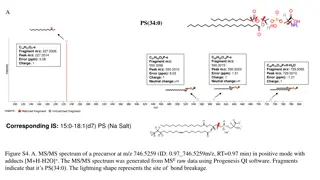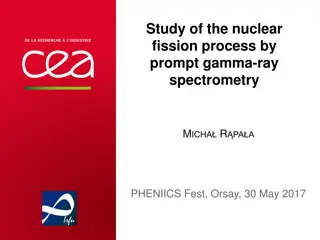Understanding Spectrometry and Electromagnetic Waves
Spectrometry plays a vital role in analytical chemistry by studying the interactions of radiation and matter through electromagnetic waves. These waves, characterized by varying electric and magnetic fields, travel at the speed of light in vacuum with a constant velocity. The properties and characteristics of electromagnetic waves along with their diverse applications across the electromagnetic spectrum are explored, highlighting their significance in technology, communication, medicine, and scientific research.
Uploaded on Sep 30, 2024 | 0 Views
Download Presentation

Please find below an Image/Link to download the presentation.
The content on the website is provided AS IS for your information and personal use only. It may not be sold, licensed, or shared on other websites without obtaining consent from the author. Download presentation by click this link. If you encounter any issues during the download, it is possible that the publisher has removed the file from their server.
E N D
Presentation Transcript
INTRODUCTION TO SPECTROMETRY
Spectroscopy/Spectrometry - Measurements electromagnetic radiation are widely used throughout analytical chemistry. - The interactions of radiation and matter are the subject of the science called spectroscopy. Electromagnetic waves - The waves produced when an electric field comes in contact with the magnetic field are called electromagnetic or EM waves. - The differing types arise from the difference in wavelength and frequency. based on light and other forms of
Properties of Electromagnetic Waves Electromagnetic waves are transverse in nature. They propagate by varying electric fields and magnetic fields, such that these two fields are at right angles to each other and at a right angle with the direction of propagation of the wave. Electromagnetic waves travel with a constant velocity in vacuum. The speed of the waves is 3 x 108m/s. Electromagnetic waves are non-mechanical waves. They do not require any material medium for propagation. They obey the equation c = f . Here, f is the frequency is Hertz and is the wavelength metres. The product of wavelength and frequency is equal to a constant c, the speed of light which is equal to 3 x 108m/s. From this relation between wavelength, frequency and speed of light we can understand that the electromagnetic waves will travel with the speed of light regardless of wavelength and frequency. The oscillating electric field and magnetic field are in the same phase. The ratio of the amplitudes of the electric field and the magnetic field is equal to the velocity of the wave.
Wave Characteristics Amplitude Period Frequency V(Velocity)=v(frequency)* (Wavelength) The wavenumber, n = 1/ (cm-1) The radiant power The Particle Nature of Light: Photons
The Electromagnetic Spectrum The range of electromagnetic waves frequencies and their respective wavelengths and photon energies is called an electromagnetic spectrum.
Applications of Electromagnetic Spectrum - The radio waves and microwaves discovered by Hertz paved the way for wireless television and radio and mobile communication. - The visible light portion of the electromagnetic spectrum is the reason for all visual aids in daily life. This is the portion of the electromagnetic spectrum that helps us to see all the objects, including the colours. - The X-rays discovered by Roentgen proved to be useful in medicine for detecting many ailments or deformities in bones. - The high ultraviolet radiation has energies to ionize the atoms causing chemical reactions. - The gamma rays discovered by Paul Villard are useful for ionization purposes, and for nuclear medicine. Significance of Electromagnetic Spectrum The electromagnetic waves in these different bands have different characteristics depending upon how they are produced, how they interact with matter and their practical applications.
Components of optical instruments - Stable source of radiant energy - Wavelength selector to isolate a limited region of the spectrum for measurement - One or more sample containers - Radiation detector, to convert radiant energy to a measurable electrical signal; and - Signal-processing and readout unit consisting of electronic hardware and in modern instruments a computer
Spectroscopic Sources A source must generate a beam of radiation that is sufficiently powerful for easy detection and measurement. Continuum sources, which emit radiation that changes in intensity only slowly as a function of wavelength Line sources, which emit a limited number of spectral lines, each of which spans a very narrow wavelength range
Sample Containers Cells or Cuvettes, must have windows that are transparent in the spectral region of interest Quartz or fused silica is required for the UV region (wavelengths less than 350 nm) and may be used in the visible region and out to about 3000 nm (3 mm) in the IR. Silicate glass is usually used for the 375 2000 nm region because of its low cost compared to quartz. Plastic cells are also used in the visible. The most common window material for IR studies is crystalline sodium chloride, which is soluble in water and in some other solvents. The best cells have windows that are perpendicular to the direction of the beam in order to minimize reflection losses. The most common cell path length for studies in the UV and visible regions is 1 cm; matched, calibrated cells of this size are available from several commercial sources
Filters operate by blocking or absorbing all but a restricted band of radiation. two types of filters are used in spectroscopy: interference filters and absorption filters. Absorption filters, which are generally less expensive and more rugged than interference filters, are limited in use to the visible region. This type of filter usually consists of a colored glass plate that absorbs part of the incident radiation and transmits the desired band of wavelengths. Absorption filters have effective bandwidths that range from perhaps 30 to 250 nm Interference filters are used with ultraviolet and visible radiation, as well as with wavelengths as long as about 14 mm in the infrared region. As the name implies, an interference filter relies on optical interference to provide a relatively narrow band of radiation, typically 5 to 20 nm in width.
Instruments used for emission spectroscopy contain a device called a polychromator, which contains multiple exit slits and multiple detectors. This arrangement allows many discrete wavelengths to be measured simultaneously
Detecting and Measuring Radiant Energy A detector is a device that identifies, records, or indicates a change in one of the variables in its environment such as pressure, temperature, or electromagnetic radiation. The ideal transducer for electromagnetic radiation responds rapidly to low levels of radiant energy over a broad wavelength range. In addition, it produces an electrical signal that is easily amplified and has a low electrical noise level
All photon detectors are based on the interaction of radiation with a reactive surface either to produce electrons (photoemission) or to promote electrons to energy states in which they can conduct electricity (photoconduction). Only UV, visible, and near-IR radiation possess enough energy to cause photoemission to occur; therefore, photoemissive detectors are limited to wavelengths shorter than about 2 mm (2000 nm). Photoconductors can be used in the near-, mid-, and far-IR regions of the spectrum
Photon Detectors Phototubes and Photomultiplier Tubes
Thermal Detectors Thermal detectors, such as thermocouples, bolometers, and pneumatic devices, were used to detect all but the shortest IR wavelengths. The most widely used is a tiny thermocouple or a group of thermocouples called a thermopile. The bolometer consists of a conducting element whose electrical resistance changes as a function of temperature. A pneumatic detector consists of a small cylindrical chamber that is filled with xenon and contains a blackened membrane to absorb infrared radiation and heat the gas. Pyroelectric detectors are manufactured from crystals of a pyroelectric material, such as barium titanate or deuterated triglycine sulfate. A crystal of either of these compounds sandwiched between a pair of electrodes produces a temperature-dependent voltage
Signal Processors and Readout Devices A signal processor is an electronic device that may amplify the electrical signal from the detector The signal processor may convert the signal from dc to ac (or the reverse), change the phase of the signal, and filter it to remove unwanted components. The signal processor may also perform such mathematical operations on the signal as differentiation, integration, or conversion to logarithms. Photon counters and Fiber optics Several types of readout devices are found in modern instruments. Digital meters and computer monitors are two examples. Computers are often used to control various instrumental parameters, to process and store data, to print results and spectra, to compare results with various databases, and to communicate with other computers and network devices.
Signals, Noise, and the Signal-to-Noise Ratio The average value of the output of an electronic device is called the signal Generally, the signals produced by analytical instruments fluctuate in a random way because a large number of variables are not controlled. These fluctuations, which limit the sensitivity of an instrument, are called noise. Chemical noise and Instrumental noise The standard deviation of the signal is a measure of the noise. The signal-to-noise ratio is usually defined as the ratio of the average value of the output signal to its standard deviation Analog filtering, lock-in amplification, boxcar averaging, smoothing, and Fourier transformation.


